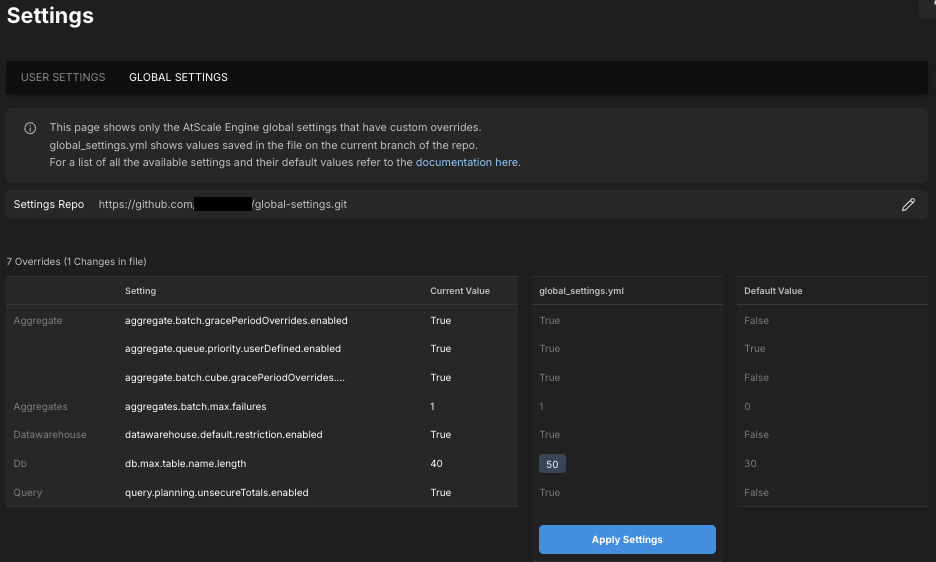Settings Page
The Settings page enables AtScale admins to manage system aggregation modes, global settings, and BI tool connections. You can access the Settings page by clicking Settings in the main navigation bar.
The Settings page and its tabs are only accessible by users with certain roles. For more information, see Identity Broker Default Roles.
The Settings page contains five tabs: User Settings, Global Settings, Tableau, Looker, and Power BI. These tabs are described in the following sections.
User Settings tab
The User Settings tab controls different aggregate modes you can put AtScale in for a set period of time. These modes only apply to the current user, with some exceptions as noted below.

-
Enable Training Mode turns on Training Mode for aggregates. Training Mode enables you to generate demand-defined aggregates by running queries representative of those that analysts will issue.
NoteWhen Training Mode is enabled, queries issued from BI tools (from any user) will not return any data.
-
Disable Aggregate Usage disables the use of system- and user-generated aggregates, so you can query the underlying tables. Aggregates may still be generated based on query activity.
-
Disable Aggregate Generation turns off aggregate generation, so no new aggregates are created. Existing aggregates are still used for queries.
Global Settings tab
The Global Settings tab enables AtScale admins to manage global settings repositories and view all currently-configured global setting overrides.

The table contains the following information:
-
The first column displays all current overrides, meaning all overrides that have been committed to the default branch of the global settings repository and applied.
-
The second column displays any overrides in the
global_settings.ymlfile that have been committed to the default branch but not yet applied. You can click Apply Settings to apply incoming changes.noteThe Apply Settings button only appears when you have changes to the global settings file that have been committed but not yet applied.
-
The third column displays the overridden settings' default values.
For more information on configuring and managing global settings, see Configuring Global Settings.
Tableau tab
The Tableau tab enables you to create and manage Tableau Server definitions. For more information, see Configuring Connections to Tableau Server.
Looker tab
The looker tab enables you to create and manage Looker configurations. For more information, see Creating a Looker Connection.
Power BI tab
The Power BI tab enables you to view and manage the Microsoft Power BI Desktop reports connected to AtScale. You can also generate service tokens for reports you want to share from Power BI Desktop to Power BI Service. For more information, see Using Power BI Service with Token-Based Authentication.